Difference Between Backup and Disaster Recovery: A Complete Guide
Every organization in this data-oriented world has to have strategies in place to protect their information.
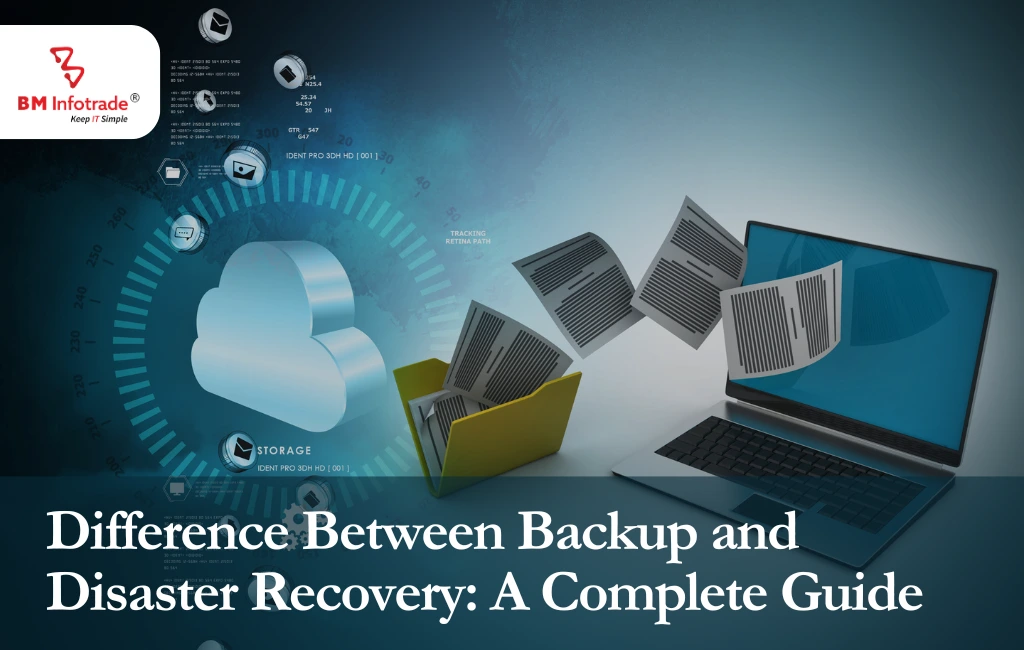
Difference Between Backup and Disaster Recovery: A Complete Guide
Table of Contents
Every organization in this data-oriented world has to have strategies in place to protect their information. Organizations cannot afford to lose their data on backup since it is almost like storing system data without a recovery plan in case of system failure for the organization. Backup means making a duplicate copy of data for loss recovery purposes, while disaster recovery refers to a restoration of productivity after certain damaging circumstances. This article has placed much attention on the issues relating to backup and disaster recovery, how both complement each other in undertaking effective data management, and how to come up with strategies on both aspects to shield the organization from loss of data.
What is Backup?
Backup is defined as a method of preventing the loss of data, files or systems by making copies of them somewhere else. This method is crucial in times of failure caused by cyber-attacks, system neglect or deletion.
Key Characteristics of Backup:
Purpose: Protection and restoration of critical data in or for certain systems or files.
Frequency: Different sources indicate that this process could take place on a daily schedule, weekly or real-time.
Location: Regularly backup data, cloud storage or offsite facilities.
Usage: Rapid retrieval of lost or damaged documents or files.
Common Backup Methods
Full Backup: All information is kept irrespective of the time taken since it is probably all your data.
Incremental Backup: Only the data that has been added or changed is appended.
Differential Backup: Only the data that has changed since the last full backup is appended.
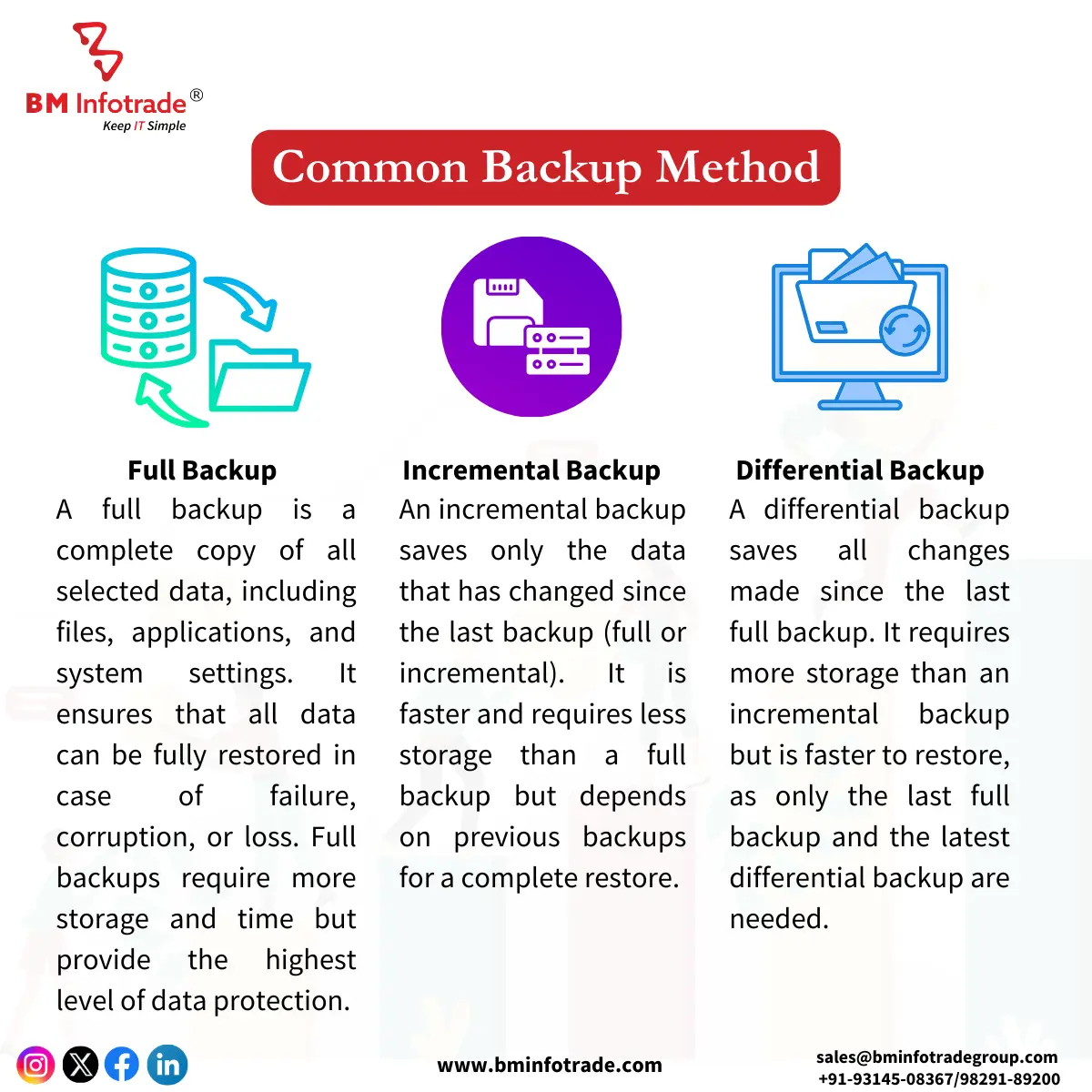
What is Disaster Recovery?
Disaster Recovery (DR) refers to the reconstruction of one or more primary Information Technology (IT) systems and business processes after their interruption, e. g. due to catastrophic events like earthquakes, failure of hardware devices, or software which has been manipulated by malware.
Desired Objectives of Disaster Recovery:
Goal: Prevent financial or other disruptions coming from damages by recovering operations of whole systems.
Definition: Covers restoration of software, application programs, servers, networks, etc.
Scope: Embarked on under emergencies during which idle time and related losses to work are sought to be curbed.
Technology: Pertains to systems of failing over, spare clouds and haystack computers.
Disaster Recovery Methods
Cold Site: A disaster recovery facility with no IT service resources that can only be used in the event of an IT disaster and requires physical setup.
Warm Site: A disaster recovery facility with technology and/or other resources available on site for immediate use in production services and offered within a planned lead time.
Hot Site: A site that is completely rebuilt and operational immediately with systems and data available as they were immediately after the incident.
Key Differences Between Backup and Disaster Recovery
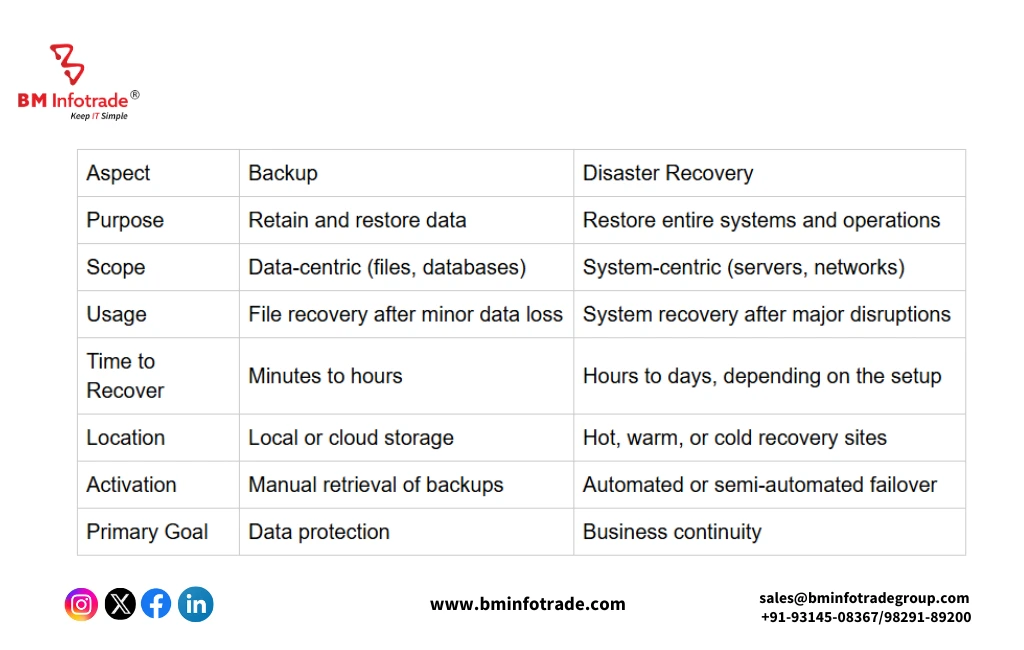
Importance of Backup and Disaster Recovery
Both backup and disaster recovery are important for an effective data security framework.
- Complementary Strategies: Backup can get the deleted files, while disaster recovery can reinstate all operational processes of your organisation.
- Reducing Downtime: Thanks to DR strategies, a company can recover from an outage effectively without most ingredients of the IT infrastructure, whereas data backups keep information from being lost completely.
- Compliance Reasons: Several industries such as the cloud computing sector necessitate both backup and disaster recovery in order to comply with laws and regulations.
Read More:- Effective Cloud Cost Optimization Strategies for Businesses in 2025
Building an Effective Backup and Disaster Recovery Strategy
Step 1: Assess Your Business Needs
- Determine information, applications, and systems that are necessary for effective working.
- Think of the risks that the organization may experience including hardware damage, hacking, or natural calamities.
Step 2: Set Recovery Objectives
- Recovery Time Objective (RTO): The maximum tolerable time within which normal functioning should be resumed.
- Recovery Point Objective (RPO): The specific amount of data capable of being lost within the timeframe of the recovery.
Step 3: Choose the Right Backup Solution
- Consider the instance, where it is advisable that back-ups that are used engage partial, whole, and backup differences in order to enhance back-up as well as safety.
- Consider storing the backups in a combination of different media for instance the local disks and the internet-based storage.
Step 4: Develop a Disaster Recovery Plan
- Prepare disaster recovery documents outlining the failover, the contacts, and standby protocols.
- Make periodic reviews and tests of the plan to see what gaps there are in it and if it is functioning as intended.
Step 5: Implement Automation Tools
- A backup can be done automatically by making some settings indicating when to perform backups and system check-ups.
- Include DR solutions that are cloud-based to allow for quick failover.
Conclusion
Despite the effort to differentiate backup and disaster recovery, these processes reinforce each other in availing security within an organization. Backup is aimed at making sure information can be retrieved within the shortest time possible while disaster recovery is the attempt to restore the vital operational processes after any interruption has been experienced. Such a combination of strategies about data security will not only give your business protection against data loss but will also make sure that the activities in it progress seamlessly even under unforeseen circumstances.



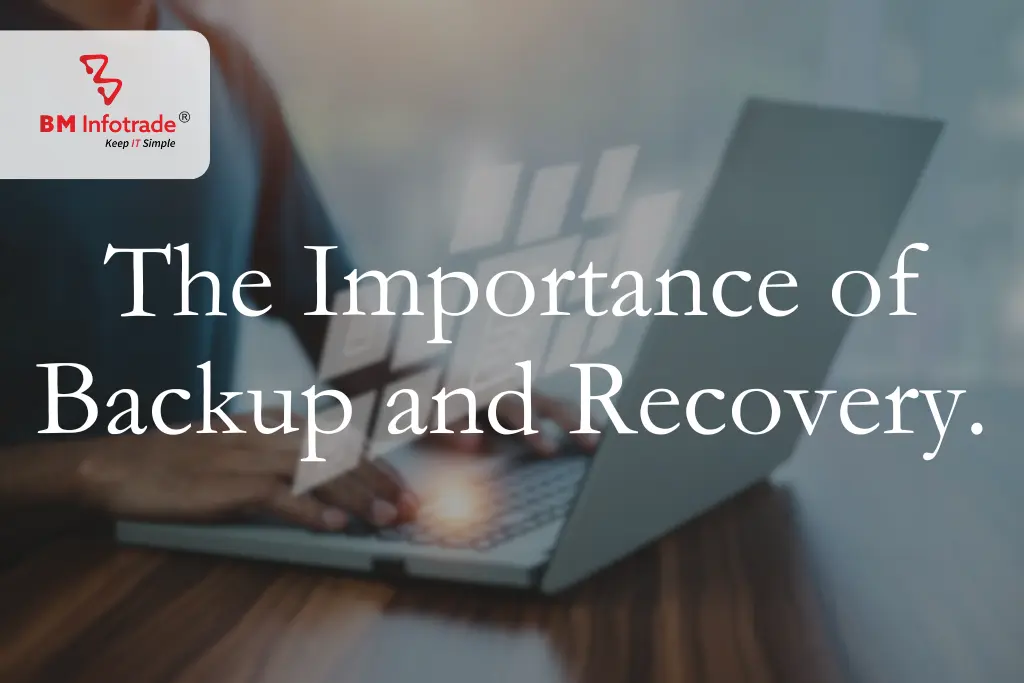
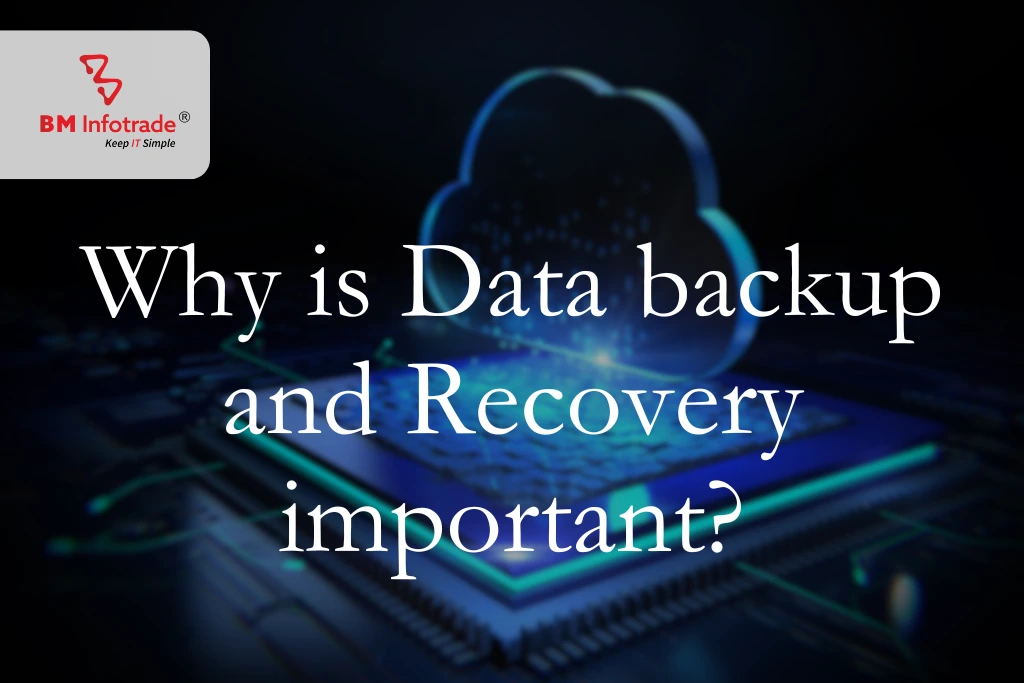

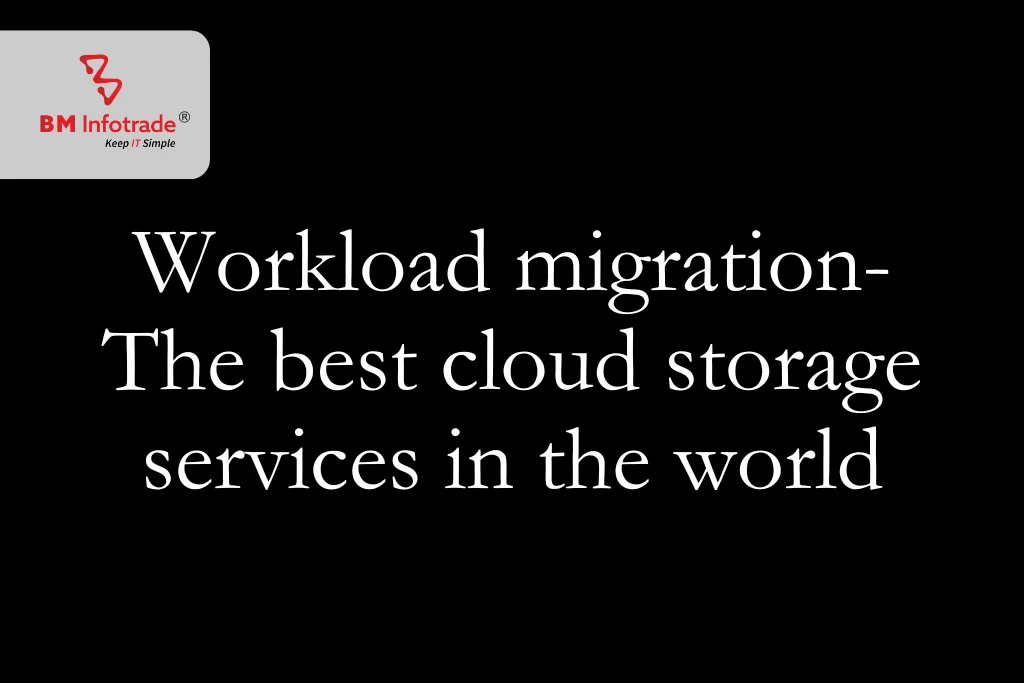
Anshul Goyal
Group BDM at B M Infotrade | 11+ years Experience | Business Consultancy | Providing solutions in Cyber Security, Data Analytics, Cloud Computing, Digitization, Data and AI | IT Sales Leader